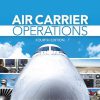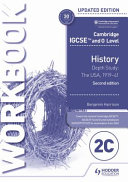Say Again Please A Pilot’s Guide to Radio Communications 7th Edition by Bob Gardner ISBN 1644252945 9781644252949
$50.00 Original price was: $50.00.$25.00Current price is: $25.00.
Say Again, Please: A Pilot’s Guide to Radio Communications 7th Edition by Bob Gardner – Ebook PDF Instant Download/Delivery: 1644252945, 9781644252949
Full download Say Again, Please: A Pilot’s Guide to Radio Communications 7th Edition after payment
Product details:
ISBN 10: 1644252945
ISBN 13: 9781644252949
Author: Bob Gardner
Say Again, Please: A Pilot’s Guide to Radio Communications 7th Edition:
Talking on an aviation radio and understanding air traffic control (ATC) instructions can be one of the most intimidating aspects of flight training. In Say Again, Please Bob Gardner explains how the ATC system works and teaches pilots what to say, what to expect to hear, and how to interpret and react to clearances and instructions. His conversational-yet-concise writing style will help increase your comfort level when using an aircraft radio. Filled with examples of typical radio transmissions that explain how ATC works, as well as simulated flights that clearly demonstrate correct communication procedures in each class of airspace, this book will have you well on your way to speaking “pilot/controller” in no time.
This hands-on book covers the following:
- The ABCs of communicating
- Understanding radio equipment
- Communication etiquette and rules
- VFR, IFR, and emergency communication procedures
- Air traffic control facilities and their functions
- Airspace definitions
- Pilot/controller communication terms and phrases
Let Say Again, Please help you learn how to communicate on the ground and in the air.
Say Again, Please: A Pilot’s Guide to Radio Communications 7th Edition Table of contents:
Chapter 1: The ABCs of Communicating
- The Pilot-Controller Partnership for Safety
- Doing Things by the Book
- Can’t We All Just Get Along?
- Mic Fright
- Technobabble Not Spoken Here
- Licensing
- Hello, Operator?
- Drones
Chapter 2: Understanding Your Equipment
- Look At All Those Knobs and Buttons!
- Transceivers
- GPS/Communication Devices
- Squelch
- Microphones
- Speakers
- Aviation Headsets
- Push-to-Talk Switch
- Intercoms
- Audio Panels
- Transponders
- Handhelds
Chapter 3: A Matter of Procedure
- Phraseology
- Why You Have Two Ears and One Mouth
- What’s In A Name?
- November
- First or Last?
- Say It All in One Breath
- “Roger, Wilco, Over and Out”
- Other Readbacks
- Be Brief, But Clear
- “VFR Bigburg.”
- “Say Again?”
- Similar Callsigns
- Type Confusion
- Communicating an Emergency
- Minimum Fuel vs. Emergency Fuel
- Simplex vs. Duplex
- Hooked on Phonics
Chapter 4: Class G Airspace
- There’s Not Much of It
- UNICOM and MULTICOM
- Let’s Go Bore Some Holes in the Sky
- You Want Fries With That?
- The Tower of Babble
- When Is a Tower Not a Tower?
- Tower in Class G Airspace?
- Summary
Chapter 5: Class E Airspace
- It’s Your Typical Flight Environment
- Departing Harvey Field
- Over the Top of Paine Field
- Extensions
- Making Position Reports
- Radar Flight Following
- Handoffs
- Terminating Radar Service
- Requests and Clearances
- Requests or Instructions?
- Strange Field Entry
- Departing a Strange Field in Class E Airspace
- No Radio (NORDO)
- Special Visual Flight Rules
- Beneath the Ceiling
- Summary
Chapter 6: Class D Airspace
- When is a Tower Not a Tower?
- Tower Frequencies
- Class G Tower?
- “What’s the ATIS?”
- Ground Control
- One Voice, Two Frequencies
- Clearance Delivery
- Progressive Taxi
- Departures
- Hold Short
- Position and Hold/Line Up and Wait
- Wake Turbulence
- Intersection Takeoffs
- “Request Frequency Change”
- Blocked Frequency
- Special Visual Flight Rules (SVFR)
- Satellite Airports in Class D Airspace
- Arriving at Olympia
- Strange Airport Arrival
- In the Pattern and on Final Approach
- Adjusting the Pattern
- Night Operations
- Landing Alternatives
- Land and Hold Short (LAHSO)
- NORDO
- Departing a Satellite Airport
- Just Passing Through
- When Your Eyes Deceive You
- UNICOM at Tower-Controlled Airports
- A Final Word About Class D Airspace
- Summary
Chapter 7: Class C Airspace
- Radar Required
- When Class C is Not Class C
- Transponder Use
- Arrival
- Departure
- SVFR
- Satellite Airports
- “Piper 70497, Stand By”
- TRSAs
- Summary
Chapter 8: Class B Airspace
- Clearance Required
- Approach and Departure Control
- Just Passing Through
- VFR Corridors, Flyways, and Transition Routes
- Landing at the Primary Airport
- Departing an Airport in the Class B Surface Area
- Departing From a Satellite Airport Beneath Class B Airspace
- Summary
Chapter 9: Class A Airspace
- It’s for the Chosen Few
Chapter 10: Flight Service Stations
- Service is Their Middle Name
- What Frequency Do I Use?
- Making Contact
- Special Use Airspace
- Special Flight Rules Areas (SFRA)
- In-Flight Weather and NOTAM Updates
- Filing Flight Plans
- Air-Filing Flight Plans
- Position Reports
- Close Your Flight Plan!
- Can You Tell Me Where There Is a Hole?
- Enroute Weather
- Summary
Chapter 11: The IFR Communicator
- What’s the Difference?
- Filing Your Flight Plan
- OTP
- Write It Down
- Ready to Copy
- VFR Departure?
- “Cleared for Takeoff”
- “Request a Vector To . . .”
- On the Way
- Weather
- Deviations
- Traffic Reports
- Sectorization
- Another Handy Trick
- Holding
- Expect the Unexpected
- Changing Altitude
- Pilot’s Discretion
- “Say Heading”
- Airspeed
- Using Your GPS
- Cruise Clearances
- STARs
- Vectors
- Approach Clearances
- GPS Approaches
- Radar Approaches
- Visual, Contact, and Circling Approaches
- Missed Approaches
- Practice Approaches
- Lost Communications
- “Minimum Fuel”
- Good Operating Practices
- Summary
Chapter 12: Now That You Know the System…
- Teamwork
- When All Else Fails
- In Conclusion
People also search for Say Again, Please: A Pilot’s Guide to Radio Communications 7th Edition:
pilot radio communication examples
aviation radio communication examples
what radio license do pilots need
radio communication pilot
pilot radio communication practice
pilot radio communications script
Tags:
Bob Gardner,Say Again,Please,Pilot’s Guide,Radio,Communications
You may also like…
Education Studies & Teaching - Studying & Test Preparation
Uncategorized
Engineering - Telecommunications
The ARRL Antenna Book for Radio Communications 24th Edition H. Ward Silver
Technique - Aerospace Equipment
Uncategorized
Commercial Pilot Licence Meteorology 2016th Edition by Bob Tait ISBN 9781641365895 1641365897
Technique - Electronics: Radio
The ARRL Handbook for Radio Communications 2019 96th Edition Arrl Inc
Technique - Aerospace Equipment
VFR Communications A Pilot Friendly Manual Pilotworkshops.Com











